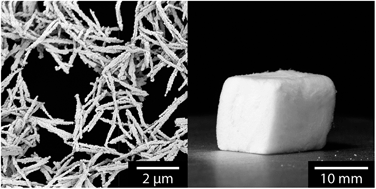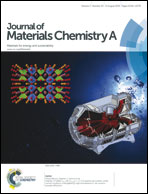Cellulose nanofibril core–shell silica coatings and their conversion into thermally stable nanotube aerogels†
Abstract
A facile water-based one-pot reaction protocol for obtaining 20 nm thick uniform silica coatings on cellulose nanofibrils (CNFs) is herein presented for the first time. The fully covering silica shells result in the thermal stability of the CNFs improved by ca. 70 °C and 50 °C under nitrogen and oxygen atmospheres, respectively. Heating of the core–shell hybrid fibres to 400 °C results in complete degradation/removal of the CNF cores, and demonstrates an inexpensive route to large-scale preparation of silica nanotubes with the CNFs used as templates. The key to a uniform condensation of silica (from tetraethyl orthosilicate) to cellulose is a reaction medium that permits in situ nucleation and growth of the silica phase on the fibrils, while simultaneously matching the quantity of the condensed silica with the specific surface area of the CNFs. Most coatings were applied to bundles of 2–3 associated CNFs, which could be discerned from their negative imprint that remained inside the silica nanotubes. Finally, it is demonstrated that the coated nanofibrils can be freeze-dried into highly porous silica/cellulose aerogels with a density of 0.005 g cm−3 and how these hybrid aerogels preserve their shape when extensively exposed to 400 °C in air (>6 h). The resulting material is the first reported silica nanotube aerogel obtained by using cellulose nanofibrils as templates.


 Please wait while we load your content...
Please wait while we load your content...